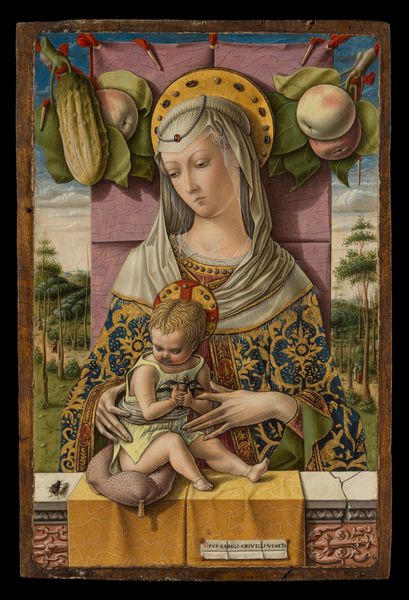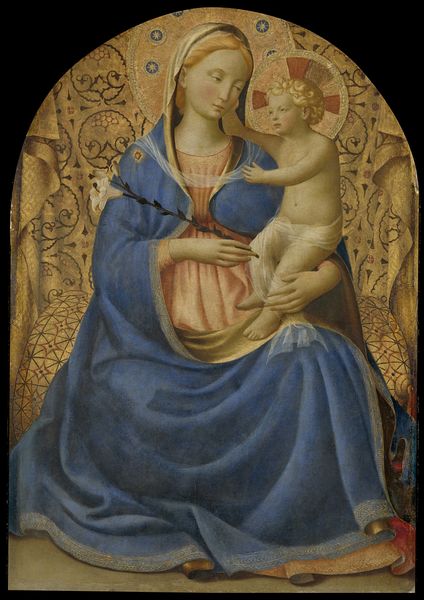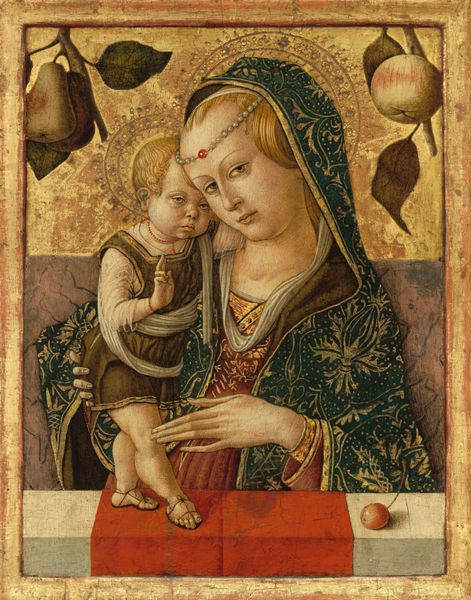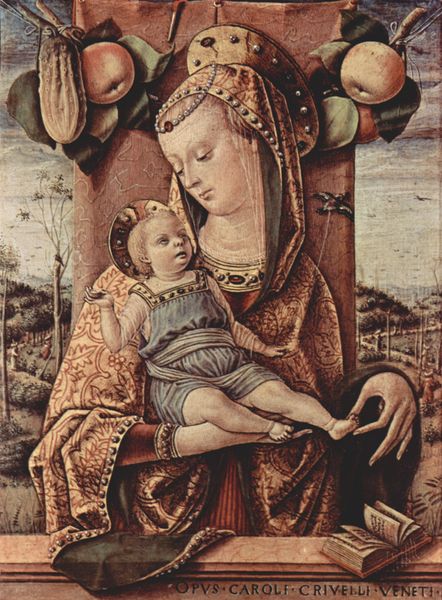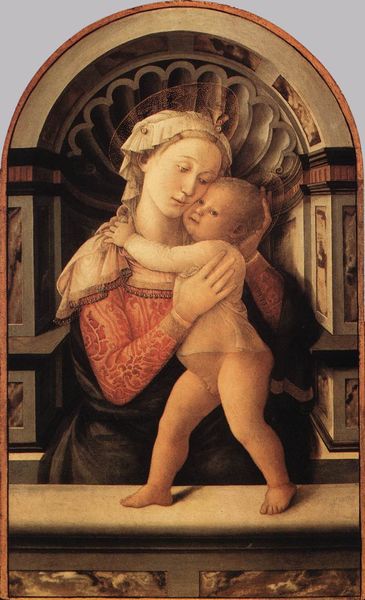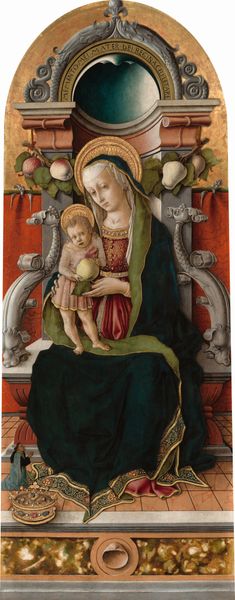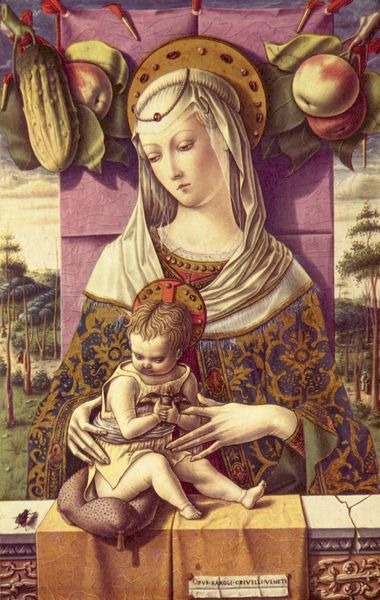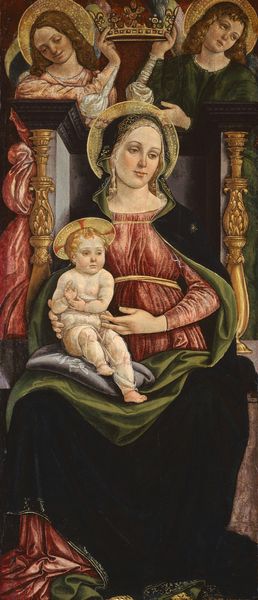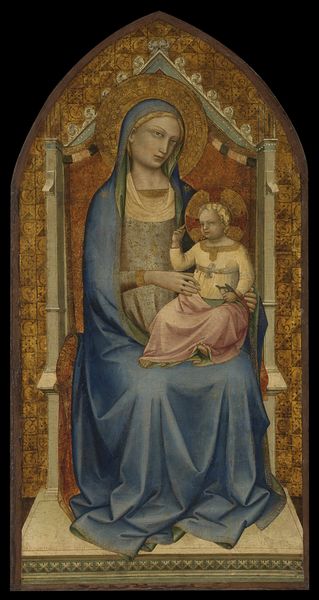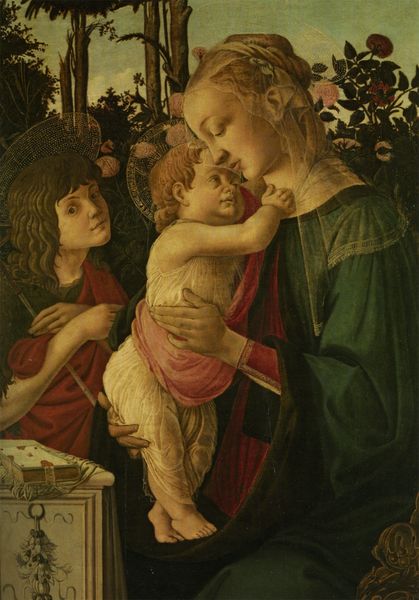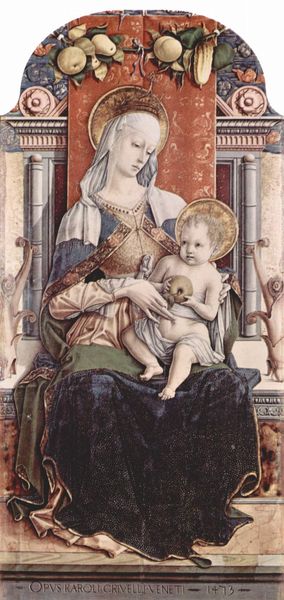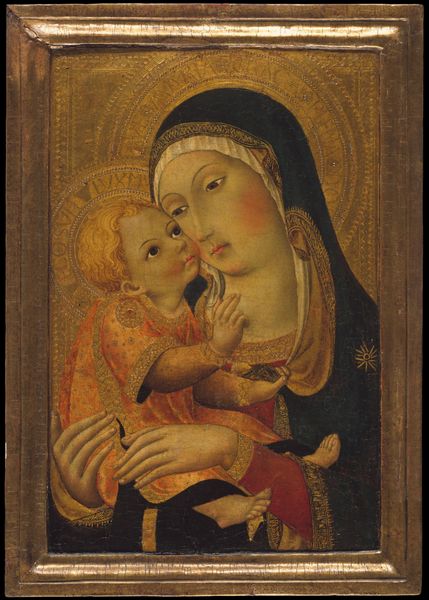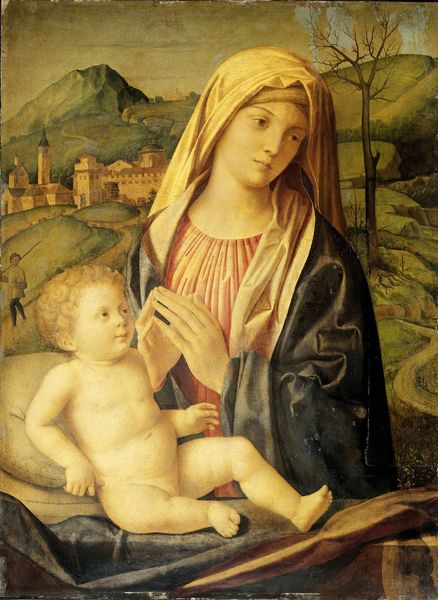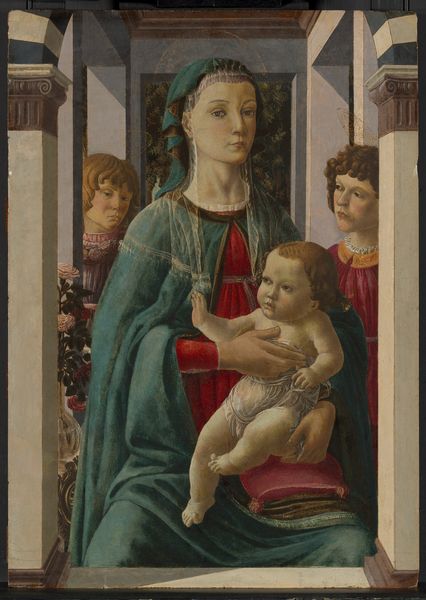
painting, oil-paint
#
painting
#
oil-paint
#
figuration
#
italian-renaissance
Dimensions: 55 1/2 x 23 3/8 in. (141 x 59.4 cm)
Copyright: Public Domain
Curator: This oil painting from the Italian Renaissance is called "Madonna and Child Enthroned" and is attributed to Nicola di Maestro Antonio, dating from around 1470 to 1480. It’s currently housed here at the Metropolitan Museum of Art. Editor: Immediately, the abundance of fruit draws my eye—oranges, maybe lemons—draped over the architectural elements behind the figures. It gives a feeling of prosperity and abundance, doesn't it? Though the Virgin's face is quite somber. Curator: Absolutely. These fruits, particularly the citrus, can hold symbolic weight. Think about the Golden Apples of Hesperides representing immortality. This would remind viewers of the divine nature of Christ and the promise of salvation. And beyond that, oranges can symbolize Mary's virtue in some contexts. Editor: Fascinating! So the citrus isn't just decorative, but also reinforces the religious themes of virtue and redemption through implied classical motifs. From an art-historical view, you have the clear influences of the Renaissance, this striving for a measured and idealized composition but it seems more approachable than other Madonnas I have seen. Perhaps it’s the soft texture afforded by the oil paint? Curator: That's astute. Antonio may have chosen oil to create smoother transitions between colors and subtle variations in light, to create a more naturalistic interpretation for this painting, as well as imbue it with warmth. Think about how the Virgin cradles the child. There's tenderness, but it also feels a bit restrained. Almost a premonition of sorrow? Editor: You know, now that you mention it, I do detect a sadness in her expression, it looks like she’s contemplating her child’s destiny. Even the tilt of his head—such a subtle detail, adds to the effect. And given how powerfully institutionalised these maternal roles were in 15th century Italian society, and how pervasive images such as this became, these features take on new social significance. It becomes less an image about pure holiness and more an example of cultural pressures relating to expectations around womanhood. Curator: And this image served that very purpose; as not only devotion for this image of divinity, but a constant and visual reiteration of society's expectations. Editor: So, an object for piety, as well as one of the building blocks for the establishment of an ideological framework. Seeing the painting through that lens certainly heightens its complexity and impact, doesn't it? Curator: It really does, considering the various symbolic and historical layers present within it, making one more cognizant of it as not only just devotion. Editor: Well, I leave having truly absorbed some further and surprising considerations beyond mere admiration for the beautiful Italian painting, which can often distract us from how this became embedded in history and still is relevant in our culture.
Comments
No comments
Be the first to comment and join the conversation on the ultimate creative platform.
